 W
WBrewer's blackbird is a medium-sized New World blackbird. It is named after the ornithologist Thomas Mayo Brewer.
 W
WThe yellow-headed blackbird is a medium-sized blackbird, and the only member of the genus Xanthocephalus.
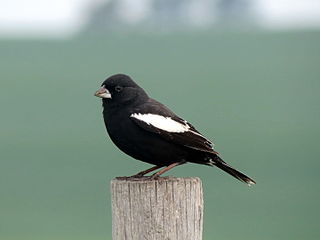 W
WThe lark bunting is a medium-sized American sparrow native to central and western North America. It is also the state bird of Colorado.
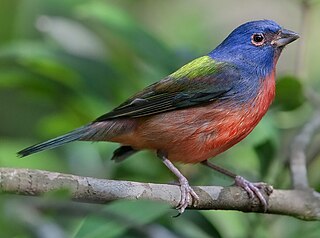 W
WThe painted bunting is a species of bird in the cardinal family, Cardinalidae. It is a near threatened bird native to North America. The bright plumage of the male only comes in the second year of life; in the first year they can only be distinguished from the female by close inspection.
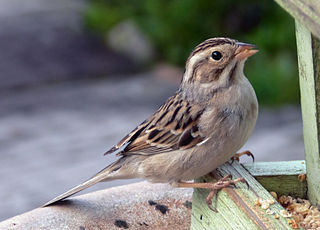 W
WThe clay-colored sparrow or clay-coloured sparrow is a small New World sparrow of North America.
 W
WThe dickcissel is a small American seed-eating bird in the family Cardinalidae. It breeds on the prairie grasslands of the Midwestern United States and winters in Central America, northern Colombia, and northern Venezuela. It is the only member of the genus Spiza, though some sources list another supposedly extinct species.
 W
WThe great crested flycatcher is a large insect-eating bird of the tyrant flycatcher family. It is the most widespread member of the genus Myiarchus in North America, and is found over most of the eastern and mid-western portions of the continent. It dwells mostly in the treetops and rarely is found on the ground.
 W
WThe scissor-tailed flycatcher, also known as the Texas bird-of-paradise and swallow-tailed flycatcher, is a long-tailed bird of the genus Tyrannus, whose members are collectively referred to as kingbirds. The kingbirds are a group of large insectivorous (insect-eating) birds in the tyrant flycatcher (Tyrannidae) family. The scissor-tailed flycatcher is found in North and Central America.
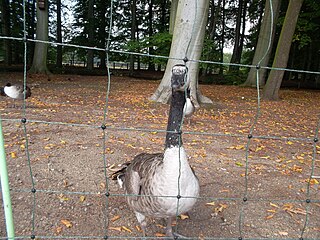 W
WThe giant Canada goose, is the largest subspecies of Canada goose, weighing in at 5 kg. It is found in central North America. These geese were at one point considered extinct, but were later rediscovered.
 W
WThe marbled godwit is a large migratory shorebird in the family Scolopacidae. On average, it is the largest of the four species of godwit.
 W
WThe great-tailed grackle or Mexican grackle is a medium-sized, highly social passerine bird native to North and South America. A member of the family Icteridae, it is one of 10 extant species of grackle and is closely related to the boat-tailed grackle and the extinct slender-billed grackle. In the southern United States, it is sometimes simply referred to as "blackbird" or (erroneously) "crow" due to its glossy black plumage, and similarly it is often called cuervo ("raven") in some parts of Mexico, although it is not a member of the crow genus Corvus, nor even of the family Corvidae.
 W
WThe sharp-tailed grouse, also known as the sharptail or fire grouse, is a medium-sized prairie grouse. One of three species in the genus Tympanuchus, the sharp-tailed grouse is found throughout Alaska, much of Northern and Western Canada, and parts of the Western and Midwestern United States. The sharp-tailed grouse is the provincial bird of the Canadian province of Saskatchewan.
 W
WFranklin's gull is a small gull. The genus name Leucophaeus is from Ancient Greek leukos, "white", and phaios, "dusky". The specific pipixcan is a Nahuatl name for a type of gull.
 W
WSwainson's hawk is a large bird species in the Accipitriformes order. This species was named after William Swainson, a British naturalist. It is colloquially known as the grasshopper hawk or locust hawk, as it is very fond of Acrididae and will voraciously eat these insects whenever they are available.
 W
WThe Western Kingbird is a large tyrant flycatcher found throughout western environments of North America and as far as Mexico.
 W
WThe Mississippi kite is a small bird of prey in the family Accipitridae. Mississippi kites have narrow, pointed wings and are graceful in flight, often appearing to float in the air. It is not uncommon to see several circling in the same area.
 W
WThe chestnut-collared longspur is a species of bird in the family Calcariidae. Like the other longspurs, it is a small ground-feeding bird that primarily eats seeds. It breeds in prairie habitats in Canada and the northern United States and winters to the south in the United States and Mexico.
 W
WThe thick-billed longspur, formerly McCown's Longspur, is a small ground-feeding bird in the family Calcariidae, which also contains the other longspurs and snow buntings. It is found in North America and is the only species in the genus Rhynchophanes.
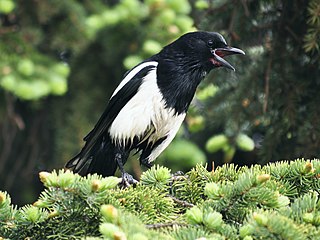 W
WThe black-billed magpie, also known as the American magpie, is a bird in the corvidae family that inhabits the western half of North America, from Colorado, to southern coastal Alaska, to Central Oregon, to northern California, northern Nevada, northern Arizona, northern New Mexico, central Kansas, and Nebraska. In Canada it is found in far Western Ontario, Manitoba, Saskatchewan, Alberta, British Columbia, and Yukon. It is black and white, with black areas on the wings and tail showing iridescent hints of blue or blue-green. It is one of only four North American songbirds whose tail makes up half or more of the total body length.
 W
WThe eastern meadowlark is a medium-sized icterid bird, very similar in appearance to the western meadowlark. It occurs from eastern North America to South America, where it is also most widespread in the east.
 W
WThe western meadowlark is a medium-sized icterid bird, about 8.5 in (22 cm) in length. It nests on the ground in open grasslands across western and central North America. It feeds mostly on bugs, but will also feed on seeds and berries. The western meadowlark has distinctive calls described as watery or flute-like, which distinguish it from the closely related eastern meadowlark. The western meadowlark is the state bird of six states: Montana, Kansas, Nebraska, North Dakota, Oregon, and Wyoming.
 W
WBullock's oriole is a small New World blackbird. At one time, this species and the Baltimore oriole were considered to be a single species, the northern oriole. This bird is named after William Bullock, an English amateur naturalist.
 W
WSprague's pipit (Anthus spragueii) is a small songbird (passerine) in the family Motacillidae that breeds in the short- and mixed-grass prairies of North America. Migratory, it spends the winters in the southwestern United States and northern Mexico. Sprague's pipits are unusual among songbirds in that they sing high in the sky, somewhat like a goldfinch or skylark. It is more often identified by its distinctive descending song heard from above than by being seen on the ground. Males and females are cryptically coloured and similar in appearance; they are a buffy brown with darker streaking, slender bills and pinkish to yellow legs. Sprague's pipit summer habitat is primarily native grasslands in the north central prairies of the United States and Canada. The species was named after the botanical illustrator Isaac Sprague.
 W
WThe piping plover is a small sand-colored, sparrow-sized shorebird that nests and feeds along coastal sand and gravel beaches in North America. The adult has yellow-orange-red legs, a black band across the forehead from eye to eye, and a black stripe running along the breast line. This chest band is usually thicker in males during the breeding season, and it is the only reliable way to tell the sexes apart. The bird is difficult to see when it is standing still, as it blends well with open, sandy beach habitats. It typically runs in short, quick spurts and then stops.
 W
WThe common poorwill is a nocturnal bird of the family Caprimulgidae, the nightjars. It is found from British Columbia and southeastern Alberta, through the western United States to northern Mexico. The bird's habitat is dry, open areas with grasses or shrubs, and even stony desert slopes with very little vegetation.
 W
WThe black rail is a mouse-sized member of the bird family Rallidae.
 W
WThe yellow rail is a small secretive marsh bird, of the family Rallidae.
 W
WThe Chihuahuan raven is a species of crow in the family Corvidae that is native to the United States and Mexico.
 W
WThe greater roadrunner is a long-legged bird in the cuckoo family, Cuculidae, from the Aridoamerica region in the Southwestern United States and Mexico. The scientific name means "Californian earth-cuckoo". Along with the lesser roadrunner, it is one of two species in the genus Geococcyx. This roadrunner is also known as the chaparral cock, ground cuckoo, and snake killer.
 W
WSay's phoebe is a passerine bird in the tyrant flycatcher family. A common bird across western North America, it prefers dry, desolate areas. This bird was named for Thomas Say, the American naturalist.
 W
WBaird's sparrow is a species of North American birds in the family Passerellidae of order Passeriformes. It is a migratory bird native to the United States, Canada, and Mexico.
 W
WCassin's sparrow (Peucaea cassinii) is a medium-sized sparrow.
 W
WThe field sparrow is a small New World sparrow in the family Passerellidae. It is about 140 mm (6 in) long and weighs about 12.5 g (0.4 oz). The head is grey with a rust-coloured crown, white eye-ring and pink bill. The upper parts are brown streaked with black and buff, the breast is buff, the belly is white and the tail is forked. There are two different colour morphs, one being greyer and the other more rufous.
 W
WHenslow's sparrow is a passerine bird in the family Passerellidae. It was named by John James Audubon in honor of John Stevens Henslow. It was originally classified in the genus Emberiza and called Henslow's bunting.
 W
WLeConte's sparrow is one of the smallest New World sparrow species in North America.
 W
WLincoln's sparrow is a small sparrow native to North America. It is a less common passerine bird that often stays hidden under thick ground cover, but can be distinguished by its sweet, wrenlike song. Lincoln's sparrow is one of three species in the genus Melospiza which also includes the song sparrow and the swamp sparrow. It lives in well-covered brushy habitats, often near water. This bird is poorly documented because of its secretive nature and breeding habits solely in boreal regions.
 W
WNelson's sparrow is a small New World sparrow. This bird was named after Edward William Nelson, an American naturalist. Formerly, this bird and the saltmarsh sparrow were considered to be a single species, the sharp-tailed sparrow; because of this it was briefly known as Nelson's sharp-tailed sparrow.
 W
WThe rufous-crowned sparrow is a small American sparrow. This passerine is primarily found across the Southwestern United States and much of the interior of Mexico, south to the transverse mountain range, and to the Pacific coast to the southwest of the transverse range. Its distribution is patchy, with populations often being isolated from each other. Twelve subspecies are generally recognized, though up to eighteen have been suggested. This bird has a brown back with darker streaks and gray underparts. The crown is rufous, and the face and supercilium are gray with a brown or rufous streak extending from each eye and a thick black malar streak.
 W
WThe brown thrasher is a bird in the family Mimidae, which also includes the New World catbirds and mockingbirds. The brown thrasher is abundant throughout the eastern and central United States and southern and central Canada, and it is the only thrasher to live primarily east of the Rockies and central Texas. It is the state bird of Georgia.
 W
WBell's vireo is a songbird that migrates between a breeding range in Western North America and a winter range in Central America. It is dull olive-gray above and whitish below. It has a faint white eye ring and faint wing bars.
 W
WThe black-capped vireo is a small bird native to the United States and Mexico. It was listed as an endangered species in the United States in 1987. Successful conservation efforts on the U.S. Army's Fort Hood and Fort Sill led to delisting the black-capped vireo in 2018. The IUCN lists the species as vulnerable.
 W
WThe prairie warbler is a small songbird of the New World warbler family.
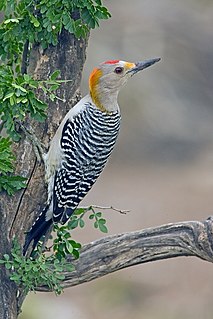 W
WThe golden-fronted woodpecker is a North American woodpecker. Its preferred habitat is mesquite, riparian woodlands, and tropical rainforest. It is distributed from Texas and Oklahoma in the United States through Mexico, Belize, Guatemala, El Salvador, Honduras and northern Nicaragua. Cooke listed this species as an abundant resident of the lower Rio Grande Valley, Texas, in 1884.
 W
WThe sedge wren is a small and secretive passerine bird in the family Troglodytidae. It is widely distributed in North America. It is often found in wet grasslands and meadows where it nests in the tall grasses and sedges and feeds on insects. The sedge wren was formerly considered as conspecific with the non-migratory grass wren of central and South America.